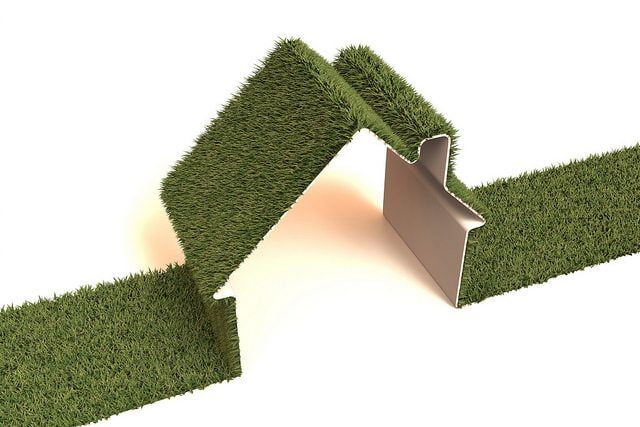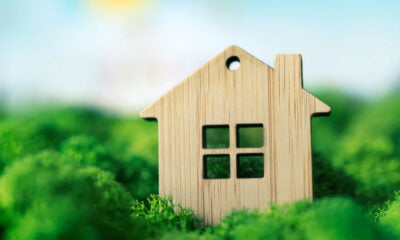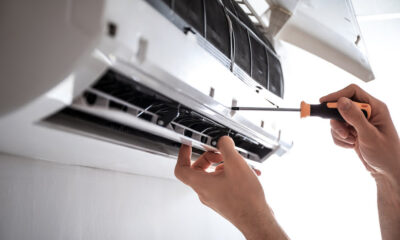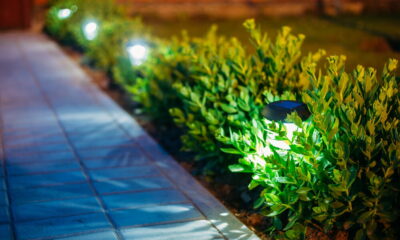

Environment
7 Easy Ways to Make Your Home More Eco Friendly
With the planet warming up at an alarming rate, living in a way that’s helpful rather than harmful to the environment should be a priority for each and every one of us.
The benefits aren’t just for the environment, of course, as greener living can end up saving you money. Making your home eco friendly doesn’t have to be expensive either because green living is more about being informed and making better choices than about spending a lot of money.
Not sure where to get started or just need some inspiration to keep moving forward? Here are a few practical ideas for setting up a more eco friendly household.
- Source eco-friendly and recycled building materials
If you’re planning to renovate your home, you’ll be in the unique position of being able to choose your own building materials and hire trades people whose practices are environmentally friendly.
Look for materials that have the lowest possible impact on the environment, such as reclaimed wood, hemp and timbercrete, mudbricks, bamboo and others. In order to reduce waste, you should also consider whether things like kitchen cabinets could be refurbished rather than replaced.
- Use non-toxic paints with natural pigments
Indoor air is known to be three times more polluted than outdoor air, and paint is one of biggest causes of indoor air pollution. Regular paints often contain everything from heavy metals to formaldehyde and other VOCs, which are not only harmful to the environment, but can also damage your health.
So if you want to liven up a room in your home by giving it a fresh coat of paint, look for non-toxic paints that use sustainable materials and natural pigments.
- Check your windows
Windows tend to be a weak point in many homes, and research shows that in the colder months, poorly insulated windows can lose up to 40% of a home’s heating, whereas in the summertime, simply using window treatments like awnings and blinds can prevent 75%-85% of solar heat gain.
Of course, installing high efficiency windows can be expensive, so if you can’t afford to change out your windows, you can make your current ones more efficient by checking for any rotting wood, gaps or leaks around the window frame and having them resealed if necessary.
- Upgrade old appliances
Older appliances may use as much as 50% more energy than newer models, so if you’re still using appliances that are more than 15 years old, you may want to consider changing them out.
If this seems expensive, remember that investing in energy-efficient appliances will save you money in the long run, and you don’t have to replace everything in one go either. Perhaps one month you could replace the old kettle and then two or three months later you could spring for a new refrigerator.
When getting rid of your old appliances, however, be sure to do your research to find out how you can dispose of them responsibly or locate a recycling company near you.
- Use appliances thoughtfully
Even if your appliances are energy-efficient, using them thoughtfully will help reduce the strain on the environment. For instance, if you place your refrigerator near a window that gets a lot of sun, it will have to work much harder to keep things cool, so it’s best to keep it in a shaded area.
Similarly, research shows that overfilling the kettle wastes millions of dollars each year, and the same goes for running the washing machine or dishwasher for only a few items.
- Install low flow toilets and showerheads
Aside from saving you money on your monthly water bills, low flow toilets and showerheads help to conserve one of the earth’s most precious resources.
When it comes to showerheads, those manufactured before 1992 use about 5.5 gallons a minute, whereas newer ones use only about 2.5 gallons. Low flow toilets are just as efficient as regular ones but use about half as much water.
If you can’t afford a new toilet just yet, though, it is possible to make your current one more efficient. Simply fill two one-liter water bottles with pebbles or gravel, flush the toilet and then put the bottles in the tank. This will save you two liters of water every time you flush.
- Start using natural cleaning products
Another reason the level of indoor air pollution is often so high is the use of cleaning products. Conventional cleaning products contain non-biodegradable and toxic chemicals that end up in our waterways where they damage plant and animal life.
So when shopping for household cleaning products and detergents, it’s best to look for products using natural ingredients such as borax or hydrogen peroxide. Alternatively, you can even make your own all-purpose cleaning products by using simple ingredients like vinegar, baking soda or lemon. If you’re interested in making your own non-toxic cleaning products, you can find out how to do so here.
Of course these aren’t the only things you can do to reduce your environmental footprint, but getting started in these small ways will help you become more eco-conscious in other areas of your life as well.
Marianne Stenger is a writer with Open Colleges. She covers everything from career development to life hacks and sustainable living. You can connect with her on Google+ and Twitter or find her latest articles here.


 Environment10 months ago
Environment10 months agoAre Polymer Banknotes: an Eco-Friendly Trend or a Groundswell?

 Environment11 months ago
Environment11 months agoEco-Friendly Home Improvements: Top 7 Upgrades for 2025

 Features9 months ago
Features9 months agoEco-Friendly Cryptocurrencies: Sustainable Investment Choices

 Features10 months ago
Features10 months agoEco-Friendly Crypto Traders Must Find the Right Exchange






























